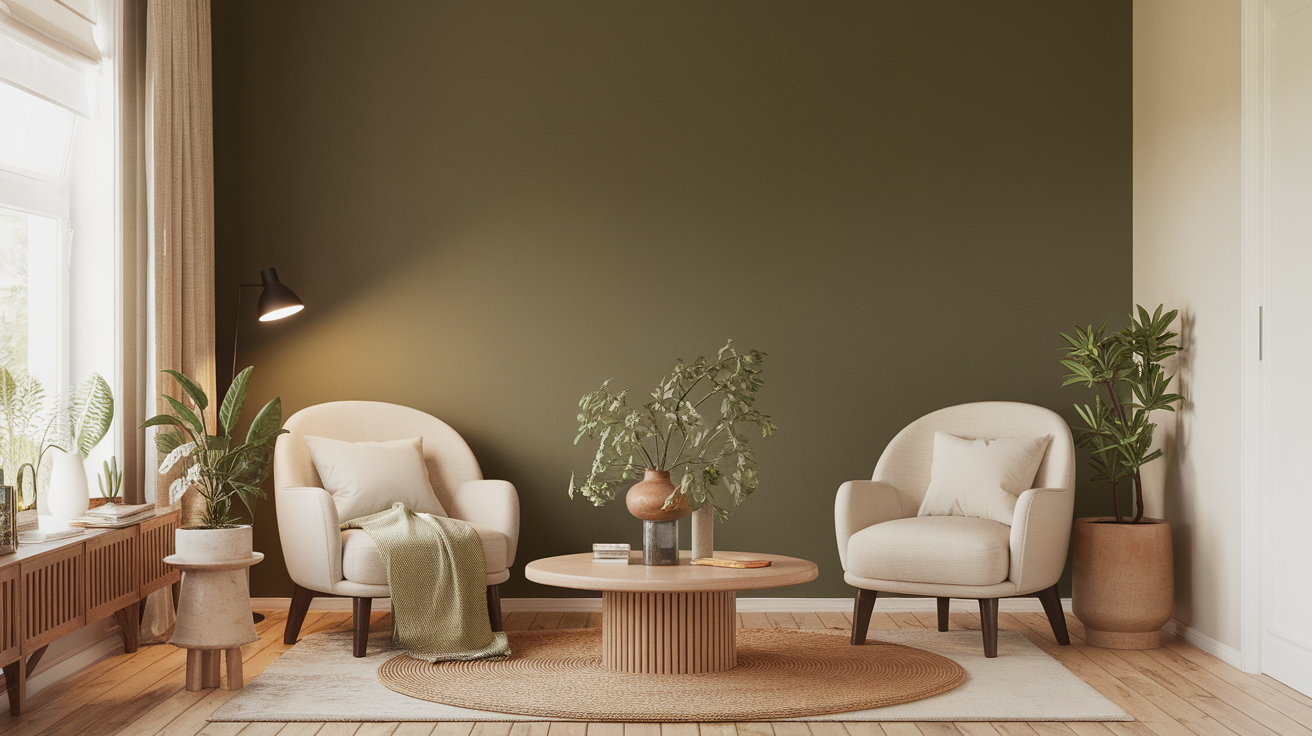Balsam is a deep, forest‑green paint that brings the calm, fresh feel of nature indoors—think pine trees after a rain shower. You can use it on a full wall for drama, on kitchen cabinets for a bold twist, or on small accents to highlight furniture.
In this article, I’ll tell you about Balsam’s true color profile—its undertones, warm‑or‑cool vibe, and how it changes in bright or low light. We’ll show you which colors pair best, from crisp whites to rich wood tones. You’ll find ideas for modern, rustic, and mix-and-match rooms, plus tips on picking the right finish.
We’ll share real home examples and point out common mistakes so you can paint with ease. Ready? Let’s get started!
What Kind of Color Is Balsam?

Balsam takes its name from the balsam fir tree, a classic evergreen found in forests and used in holiday wreaths. This deep green paint brings the calm, peaceful feel of the woods indoors. It’s a strong green, but it isn’t harsh. The color blends in soft blue-green touches and a little bit of gray, which keeps it from feeling too bright or too heavy.
These extra tones make Balsam feel rich but still easy to live with. In rooms with lots of sunlight, Balsam can look fresh and full of energy, almost like new spring leaves. As the light fades, it changes slightly and becomes warmer and softer, which makes the space feel calm and relaxing.
Because its color has both cool and warm parts, it works well with many different styles and pieces, like wood furniture, brass light fixtures, or creamy white trim. If you’re going for a natural, classic, or cozy look, Balsam fits in without taking over the room.
It’s a great option for living rooms, bedrooms, and even hallways if you want a space that feels quiet, steady, and connected to nature.
Is It a Warm or Cool Color?
Balsam sits right in the middle of warm and cool because it mixes green with soft brown‑gray hints. Those brownish tones add a bit of warmth, so it never feels cold or too sharp. At the same time, its green base keeps it feeling steady and calm, like a quiet forest.
This balance makes the color easy to use in many kinds of rooms. In bright daylight, the green becomes more noticeable and gives off a lively, natural feel, like young leaves in spring. But under soft or yellow lighting, the deeper brown‑gray tones show up more, adding a warm, cozy touch—almost like the feeling of sitting in a small, quiet reading spot.
This mix of warm and cool tones lets Balsam work in lots of different settings. It feels comfortable in bright, sun-filled rooms where the green looks clean and full of life. It also works in darker rooms or spots with less light, where it feels rich and comforting instead of dull or too heavy.
Because of this flexibility, Balsam is a smart pick for people who want a strong color that still plays well with natural light and different design styles.
What Paint Finish Should You Choose?
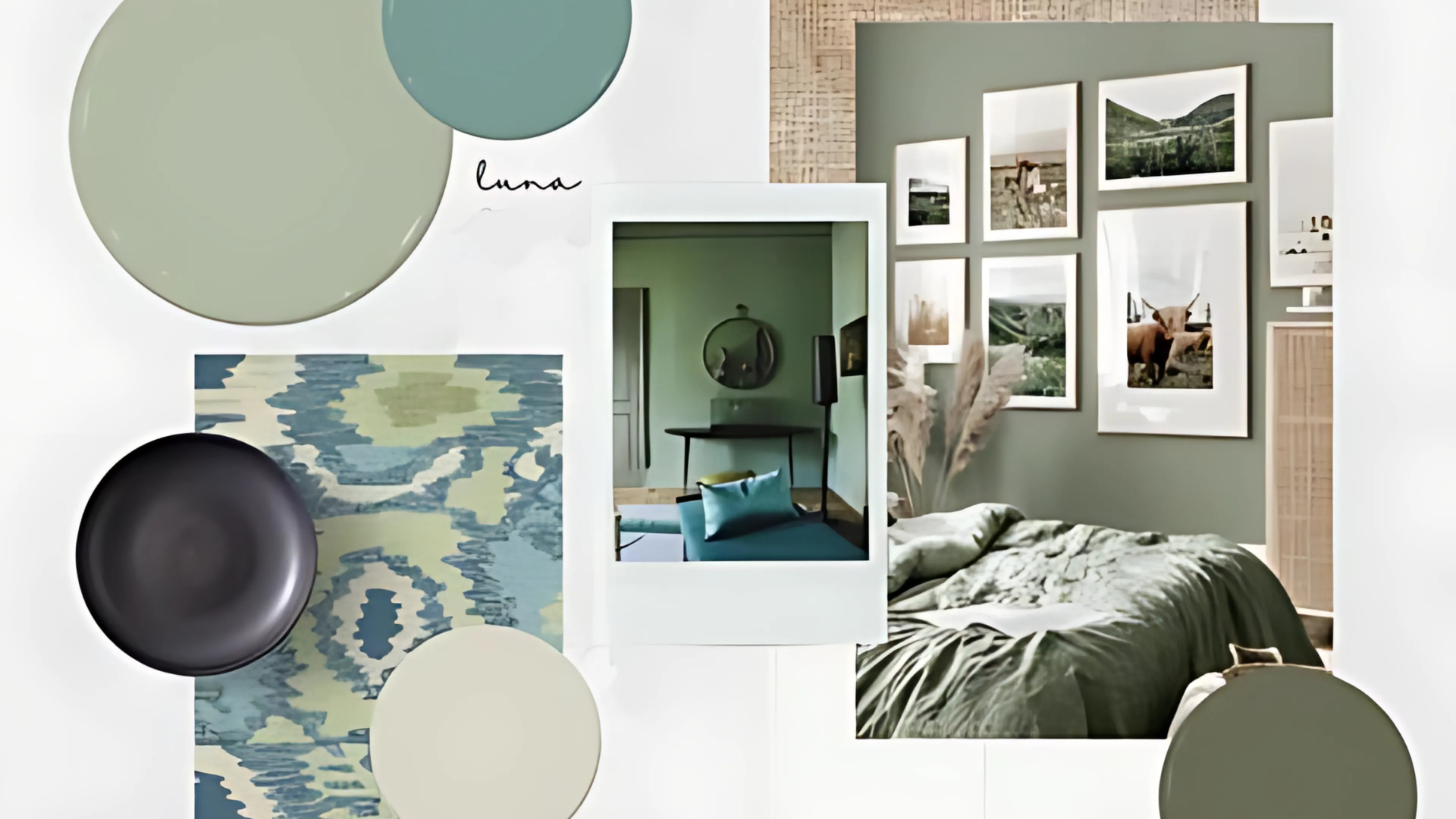
Choosing the right paint finish can make a big difference in how Balsam looks in your space. Different surfaces need different finishes to look their best and last longer. Here’s a simple guide to help you decide.
Matte Emulsion for Walls: Matte emulsion gives your walls a soft, flat look that hides little bumps and marks. It feels smooth to the eye and keeps your room calm and cozy. Since it doesn’t shine, you won’t see every tiny flaw—perfect for big wall areas.
Eggshell or Satin for Trim: Eggshell and satin finishes have a gentle glow that catches light without being too shiny. They’re tougher than matte finishes, so you can wipe off fingerprints or dust from window frames and baseboards. This helps your trim look neat and fresh over time.
Gloss for Doors & Cabinets: The gloss finish is shiny and makes doors and cabinets stand out. It’s super easy to clean—just a quick wipe removes smudges and spills. The bright look also gives a crisp contrast to your matte or satin surfaces around the room.
Taking a few minutes to pick the right finish for each part of your room will help your paint stay clean, last longer, and look just right. Whether you’re painting big walls or small details, the right finish makes all the difference.
Real Home Ideas Using Balsam by Benjamin Moore
If you’re looking for ways to use Balsam in your home, these real-life ideas can help you get started. This rich green works in both big and small spaces, and it pairs nicely with natural materials, white tones, and warm metals. Here are a few ways to try it in different rooms.
Kitchen Cabinets with Brass Handles
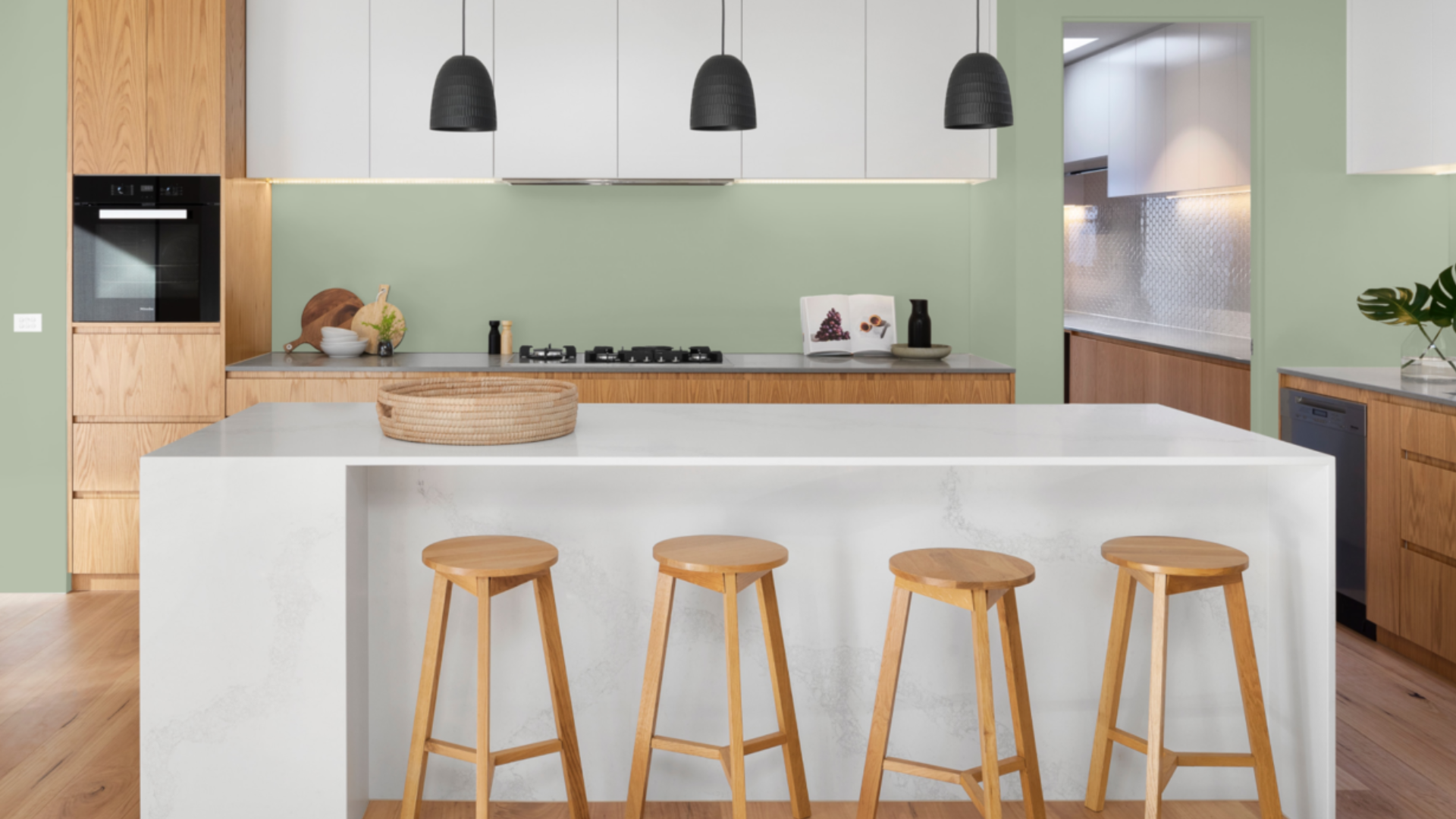
Paint your lower kitchen cabinets in Balsam to bring a grounded, calm feel into the room. Add simple brass handles for warmth and shine. The deep green and soft gold colors of the metal look good together and make your kitchen feel balanced. Pair the cabinets with white countertops and a white subway tile backsplash to keep things clean and bright. This mix of dark and light colors keeps the space open, not heavy.
Living Room Accent Wall
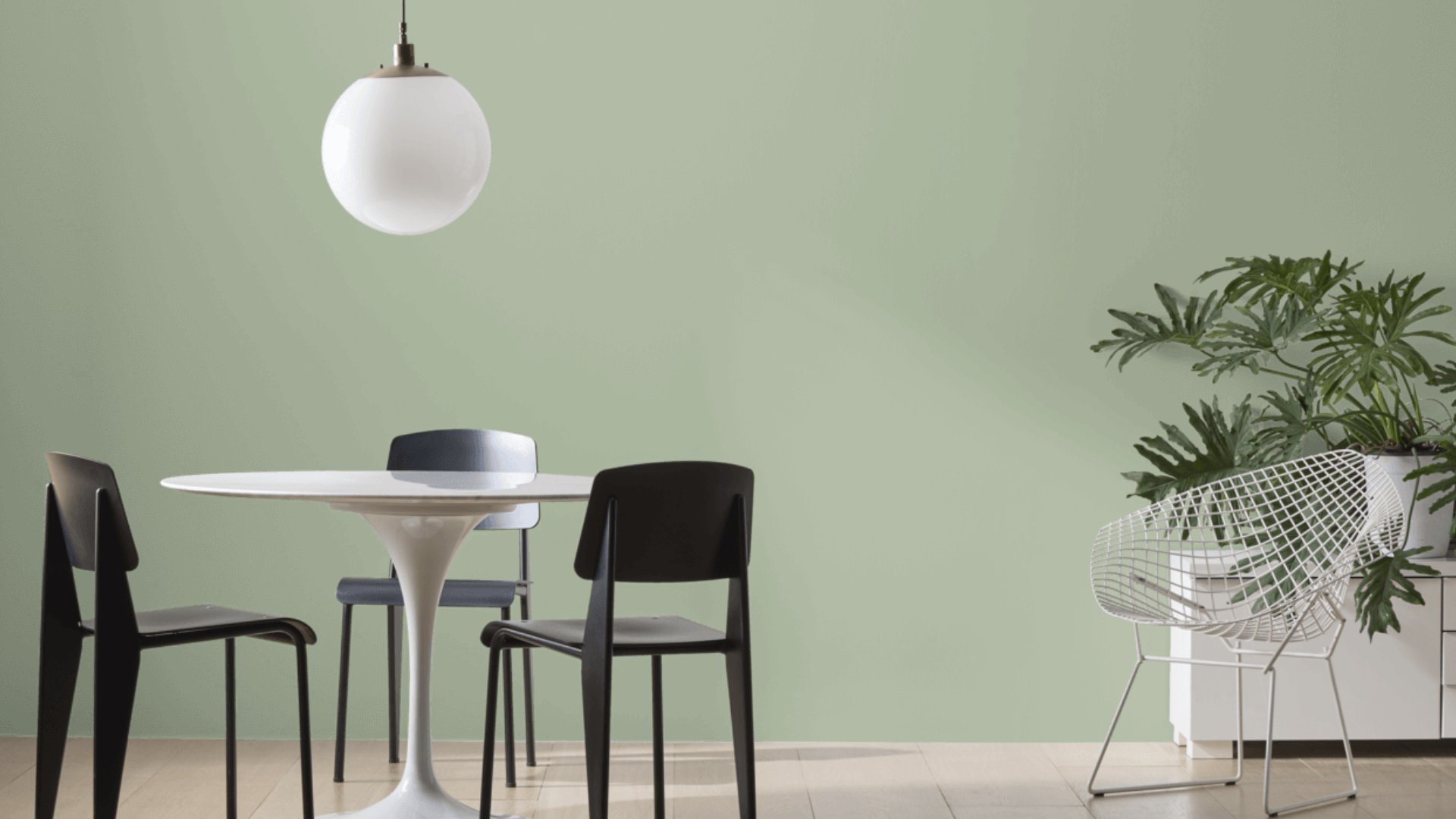
Choose one wall in your living room—behind the sofa or fireplace—and paint it in Balsam. This dark green wall becomes the main point of interest and helps lighter pieces in the room stand out more. It adds depth without taking over the whole space. Keep the rest of the walls light, using pale grays, off-whites, or soft cream tones, to make sure the accent wall feels bold but not too strong.
Bedroom Headboard Feature
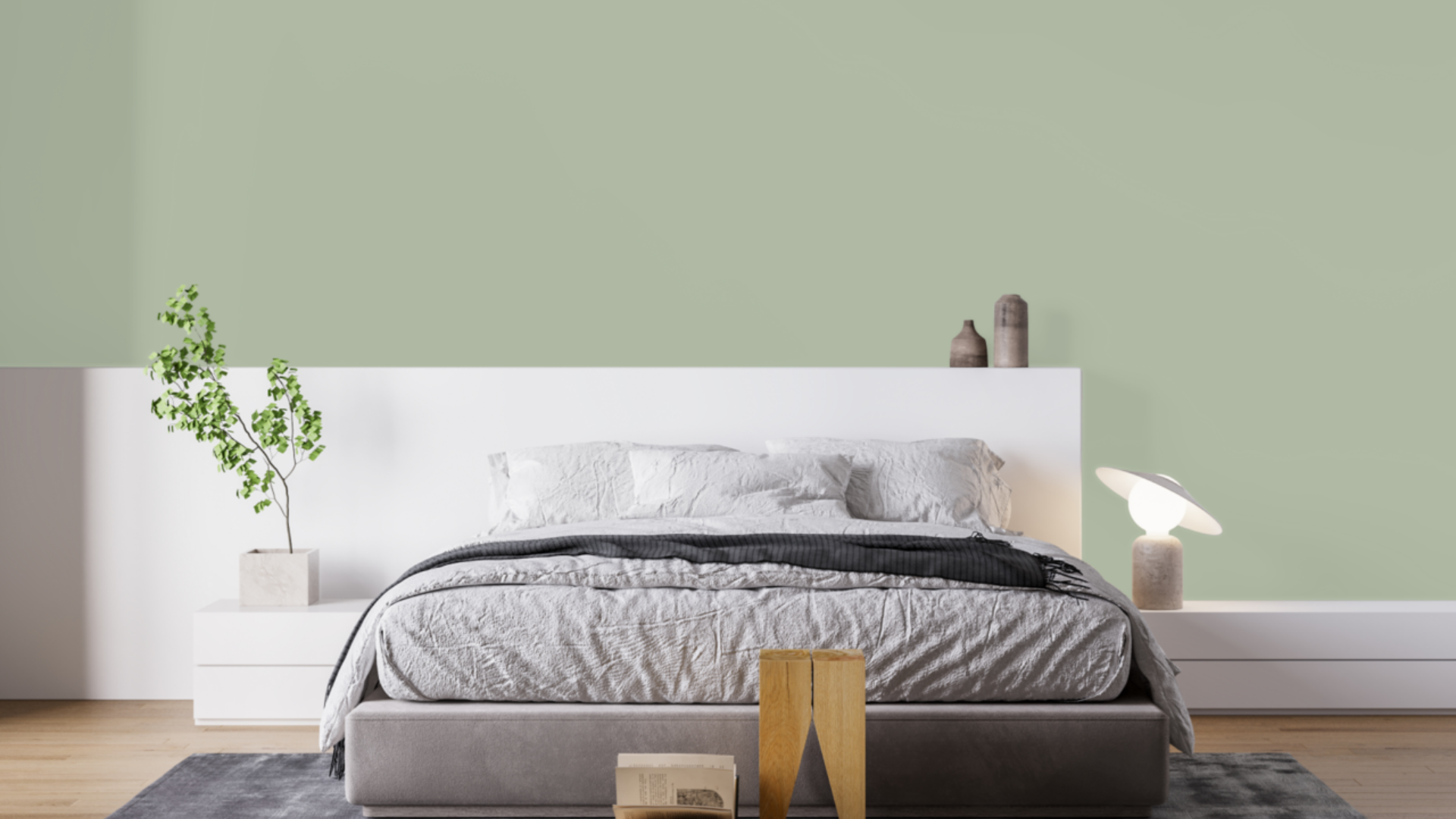
You can skip a large headboard by painting the wall behind your bed in Balsam instead. This rich green shade adds depth and makes the bed area feel cozy and framed. Use crisp white sheets and a soft blanket or a few pillows to balance the dark wall with something light. Wooden nightstands or small brass lamps can also help bring out the warmer parts of the color.
Bathroom Vanity Base
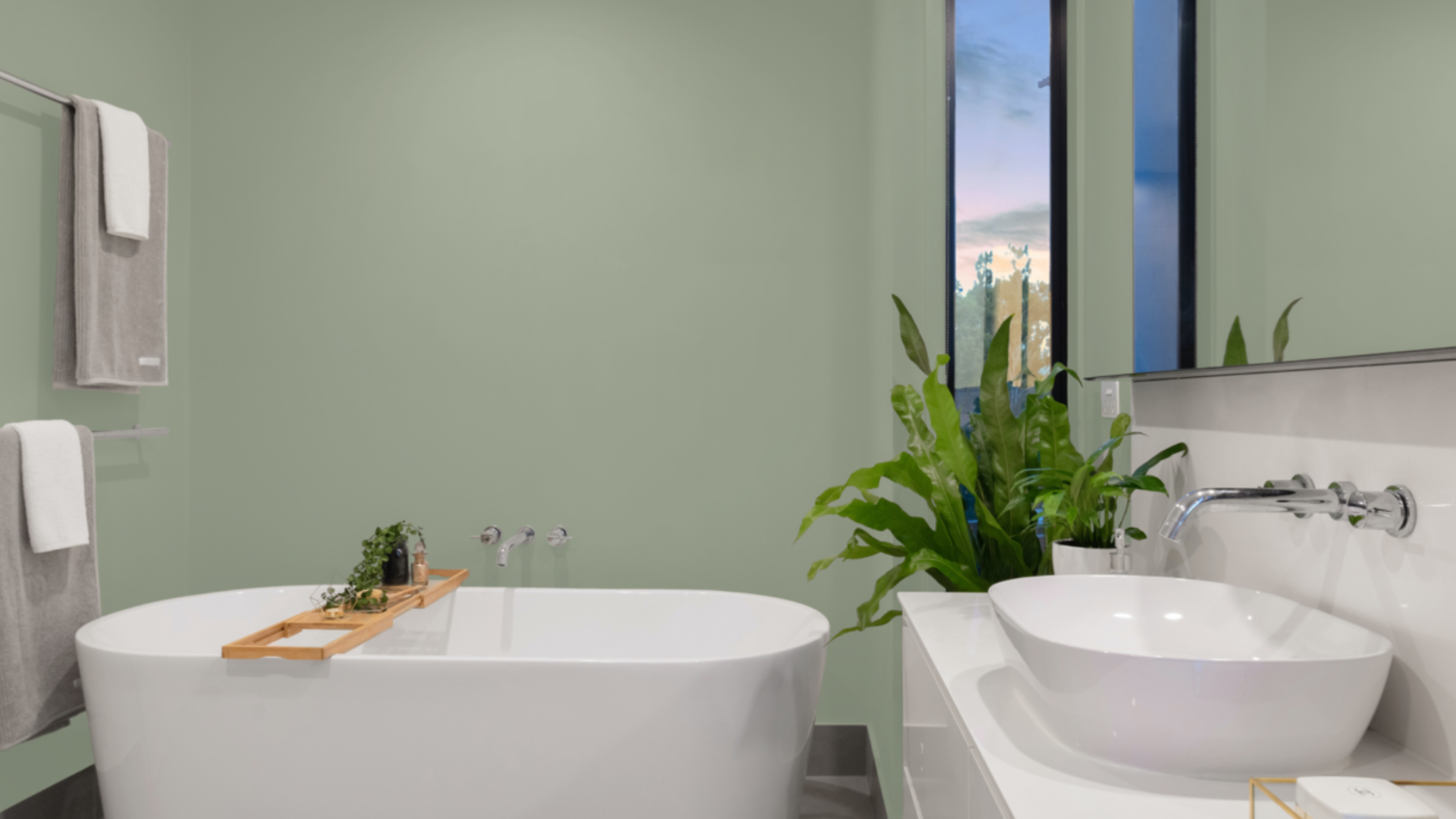
Give your bathroom a quick update by painting the vanity base in Balsam. This deep green adds color without being too bold and works well with both white and marble countertops. Simple knobs or handles—like black or brushed brass—keep the look clean and easy to care for. The result is a bathroom that feels calm and tidy, with a touch of color that still looks natural.
Balsam is flexible and works in all kinds of rooms. Whether you want to make a big change or try it on one surface, this color brings a peaceful, steady feel to your home. With the right mix of light shades, wood, or warm metals, Balsam can look fresh, classic, or cozy—whatever fits your style best.
Common Mistakes to Avoid
Even a great color like Balsam won’t look right if it’s used incorrectly. Knowing what not to do can help you get the best results. Here are some common painting mistakes and how to avoid them when working with this deep green shade.
- Covering Every Wall in Small Rooms: Using Balsam on all four walls in a tiny room can make the space feel tighter and more closed-in. Dark colors like this deep green can take over if there’s not enough natural light or space.
- Skipping a Test Patch: It’s tempting to go straight from the paint can to the wall, but that can lead to disappointment. Paint a small section first and look at it during different times of day.
- Choosing the Wrong Finish: Not all finishes work for every surface. A high-shine gloss on large wall areas can show off bumps, brush strokes, or rough spots. For wide walls, go with a matte or eggshell finish that softens the look and hides little marks.
- Not Checking the Lighting: Lighting plays a big part in how paint looks. In strong daylight, Balsam shows off more green. In soft or warm indoor light, it may shift to a calmer gray-green tone.
Taking a little extra time to plan your color use, test your sample, and choose the best finish can make a big difference. Balsam is a strong and steady green, and with the right approach, it can bring warmth, calm, and style to your hom, —without any trouble down the line.
Conclusion
Balsam is a rich, forest green that brings a calm, natural feel to any room. Whether you use it on walls, cabinets, or your front door, remember to pick the right finish—matte for walls, satin for trim, and gloss for doors or cabinets. Please test a small patch first and watch it in daylight and indoor light.
Pair Balsam with whites, wood tones, or brass accents, and avoid overpainting tiny spaces. With these simple tips, you’ll feel confident choosing Balsam to add a fresh, cozy touch to your home.
Try Balsam on a hallway wall for an extra touch and balance it with light decor to keep rooms bright. Houseplants and woven rugs look great with it, also you can use extra paint on small items like frames or pots. Enjoy its natural, calm vibe every day.

